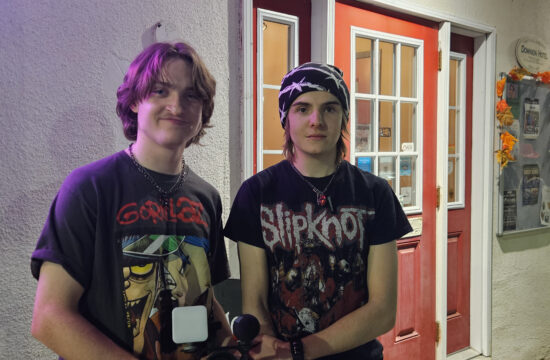By Emily Stonehouse
This week, the paper is filled with some very real stories.
And I don’t mean real in the sense that they are true and accurate (though I can assure you, they are), but rather, real in the way they make us feel.
We are living in an age of artificial intelligence (AI). On every email I send, I am given a prompt for words to write (I refuse to use the suggested texts). On every photo of my kids I send through to a group chat with my book club, I’m asked if I would like to edit with AI (my kids need no edits).
Even in our production of this paper, there is a tool recently implemented through an update that summarizes each and every page, scanning for irregularities.
I don’t believe these tech enhancements serve any true purpose other than simplifying the tasks right in front of us. And while some forms of technology are available to streamline our efforts, I don’t believe we need others that just dumb us down.
Because in this paper, I see colour, I see chaos, I see rawness and vulnerability and the abstract concept of being a human in a world that’s ever-changing.
This week, we have a clown who has dedicated her life to bringing joy to others. An experience on a movie set with lights and makeup and magic. A nod to a local Highlander of the Year, who has spent his life building up this community, brick by brick. A photographer committed to bringing his adventures to life for all to see. Images of kids of all ages dressing up and playing pretend on Halloween.
It’s real. This community is real. This life in front of us is real.
And I am constantly discouraged by the inundation of AI in this world. Perhaps it may seem odd that I have chosen a topic for an editorial that is not directly woven into this paper, but it occurred to me that it’s always there, lurking in the background.
Every day I get the email prompts. The push badges to edit photos of my friends and family. The questions around whether something is real or fake.
And I used to be relatively decent at telling the difference. But the bots have advanced, and sometimes even the most trained eyes can miss the signs.
I know I’m not alone. Dr. Nell Thomas will be leading the next Speakers Series on the topic on Nov. 12 at the Fish Hatchery. Our own columnist, Erin Kernohan, writes about it often in her Humans and Technology column.
We can’t ignore its constant presence. But what we can do, in an effort to fight against the current of AI, is find the things that are real. The people in our community. A country uniting around a baseball game. Art. Music. Theatre. Poetry. The efforts those around us make during peak volunteer seasons. The feeling of giving back, and brightening someone’s day.
Like any new technology, there is a time and a place for AI, and some advances it can make to simplifying everyday tasks.
But when you simplify life, the nuances are dropped. The mess, the magic, the colour, the chaos. The things that make the world vibrant, different, bold.
Let’s not get caught in the current of AI.
We need to go against the grain.
We need to keep creating.
We need to be real.














